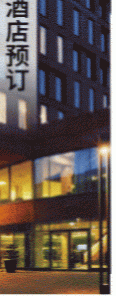- 积分
- 13606
- 威望
- 3527
- 金钱
- 0
- 阅读权限
- 1
- 性别
- 女
- 来自
- Deutschland
- 在线时间
- 913 小时
|
4#
 发表于 2007-3-28 16:26
发表于 2007-3-28 16:26
| 只看该作者

Diagnostic Guidelines
The cardinal features are impaired attention and overactivity: both are necessary for the diagnosis and should be evident in more than one situation (e.g. home, classroom, clinic).
Impaired attention is manifested by prematurely breaking off from tasks and leaving activities unfinished. The children change frequently from one activity to another, seemingly losing interest in one task because they become diverted to another (although laboratory studies do not generally show an unusual degree of sensory or perceptual distractibility). These deficits in persistence and attention should be diagnosed only if they are excessive for the child's age and IQ.
Overactivity implies excessive restlessness, especially in situations requiring relative calm. It may, depending upon the situation, involve the child running and jumping around, getting up from a seat when he or she was supposed to remain seated, excessive talkativeness and noisiness, or fidgeting and wriggling. The standard for judgement should be that the activity is excessive in the context of what is expected in the situation and by comparison with other children of the same age and IQ. This behavioural feature is most evident in structured, organized situations that require a high degree of behavioural self-control.
The associated features are not sufficient for the diagnosis or even necessary, but help to sustain it. Disinhibition in social relationships, recklessness in situations involving some danger, and impulsive flouting of social rules (as shown by intruding on or interrupting others' activities, prematurely answering questions before they have been completed, or difficulty in waiting turns) are all characteristic of children with this disorder.
Learning disorders and motor clumsiness occur with undue frequency, and should be noted separately when present; they should not, however, be part of the actual diagnosis of hyperkinetic disorder.
Symptoms of conduct disorder are neither exclusion nor inclusion criteria for the main diagnosis, but their presence or absence constitutes the basis for the main subdivision of the disorder (see below).
The characteristic behaviour problems should be of early onset (before age 6 years) and long duration. However, before the age of school entry, hyperactivity is difficult to recognize because of the wide normal variation: only extreme levels should lead to a diagnosis in preschool children.
Diagnosis of hyperkinetic disorder can still be made in adult life. The grounds are the same, but attention and activity must be judged with reference to developmentally appropriate norms. When hyperkinesis was present in childhood, but has disappeared and been succeeded by another condition, such as dissocial personality disorder or substance abuse, the current condition rather than the earlier one is coded.
Differential Diagnosis
Mixed disorders are common, and pervasive developmental disorders take precedence when they are present. The major problems in diagnosis lie in differentiation from conduct disorder: when its criteria are met, hyperkinetic disorder is diagnosed with priority over conduct disorder. However, milder degrees of overactivity and inattention are common in conduct disorder. When features of both hyperactivity and conduct disorder are present, and the hyperactivity is pervasive and severe, "hyperkinetic conduct disorder" (F90.1) should be the diagnosis.
A further problem stems from the fact that overactivity and inattention, of a rather different kind from that which is characteristic of a hyperkinetic disorder, may arise as a symptom of anxiety or depressive disorders. Thus, the restlessness that is typically part of an agitated depressive disorder should not lead to a diagnosis of a hyperkinetic disorder. Equally, the restlessness that is often part of severe anxiety should not lead to the diagnosis of a hyperkinetic disorder. If the criteria for one of the anxiety disorders are met, this should take precedence over hyperkinetic disorder unless there is evidence, apart from the restlessness associated with anxiety, for the additional presence of a hyperkinetic disorder. Similarly, if the criteria for a mood disorder are met, hyperkinetic disorder should not be diagnosed in addition simply because concentration is impaired and there is psychomotor agitation. The double diagnosis should be made only when symptoms that are not simply part of the mood disturbance clearly indicate the separate presence of a hyperkinetic disorder.
Acute onset of hyperactive behaviour in a child of school age is more probably due to some type of reactive disorder (psychogenic or organic), manic state, schizophrenia, or neurological disease (e.g. rheumatic fever). |
|







 发表于 2007-3-28 16:11
|
发表于 2007-3-28 16:11
| 
 发表于 2007-3-28 16:20
|
发表于 2007-3-28 16:20
| 


